Joint Experiment
Our second CNC assignment is to create a wooden joint. We needed to mill the wood carefully so the result provides a solid connection between the two pieces.
I designed and milled a Blind finger tenon joint. I am pleased with the final result:



The most difficult part of this assignment was designing the joint in Vectorworks with the proper tolerances. The tolerances were guesses for how much wiggle room I should incorporate into my design. In the end I guessed 0.01 inches. It proved to be a very good guess.
I created the G-code on the CAM machine and fired up the CNC.
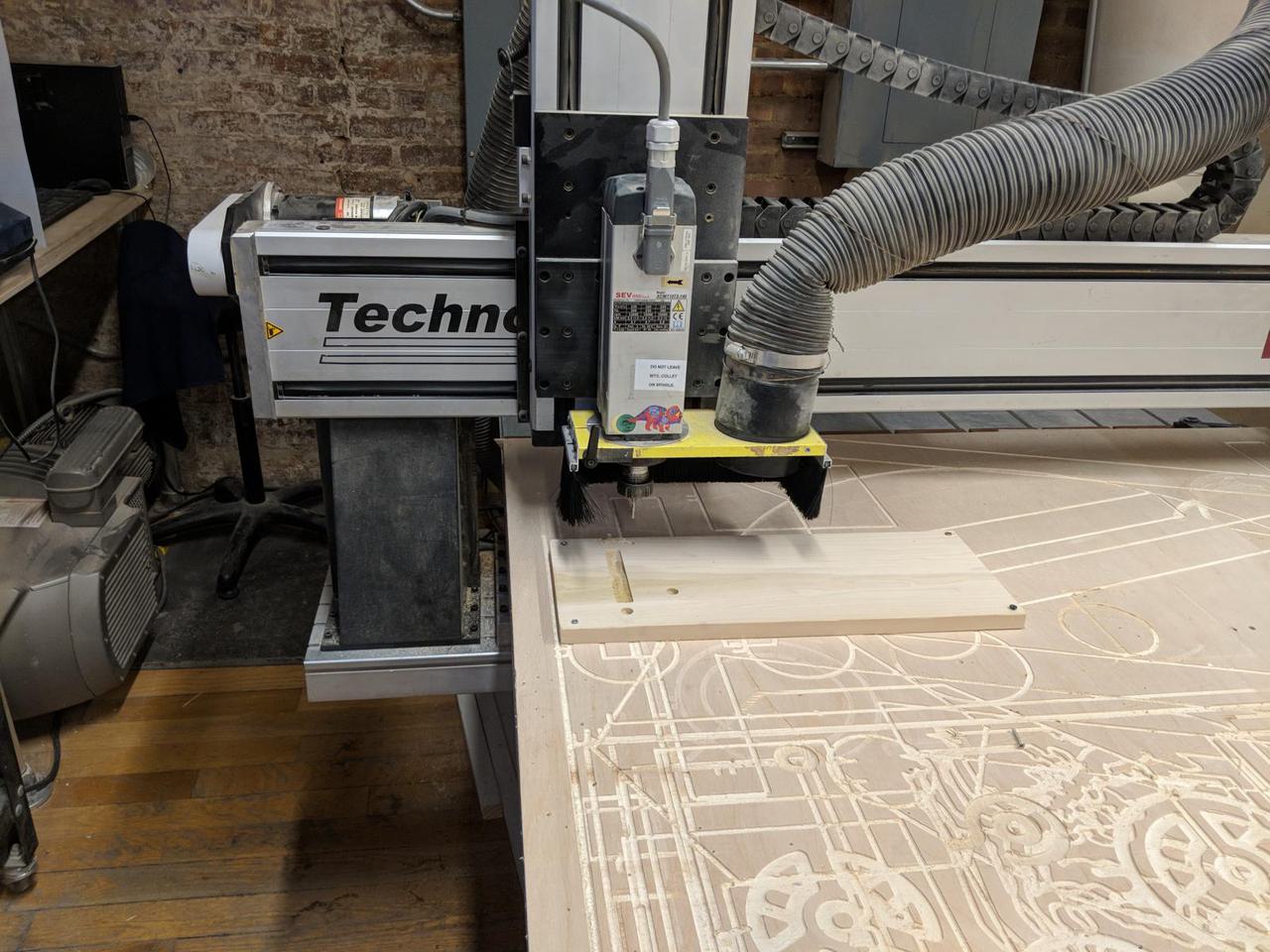
After milling the first few pockets I paused the job and added two screws to keep my pieces in place. After the contours are cut the pieces would otherwise not be connected to anything and would be free to fly around the room.
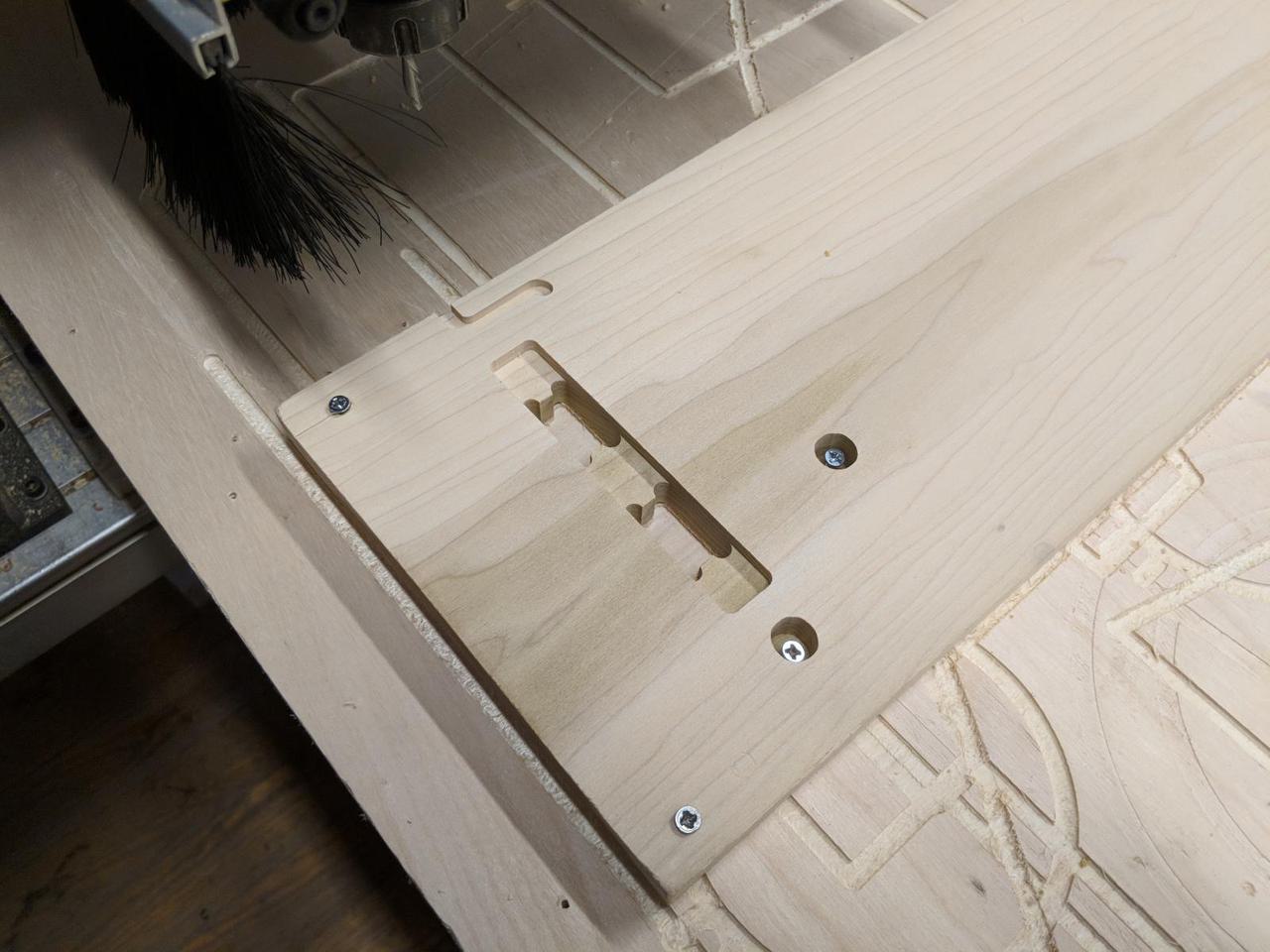
I resumed the job and cut the contours.
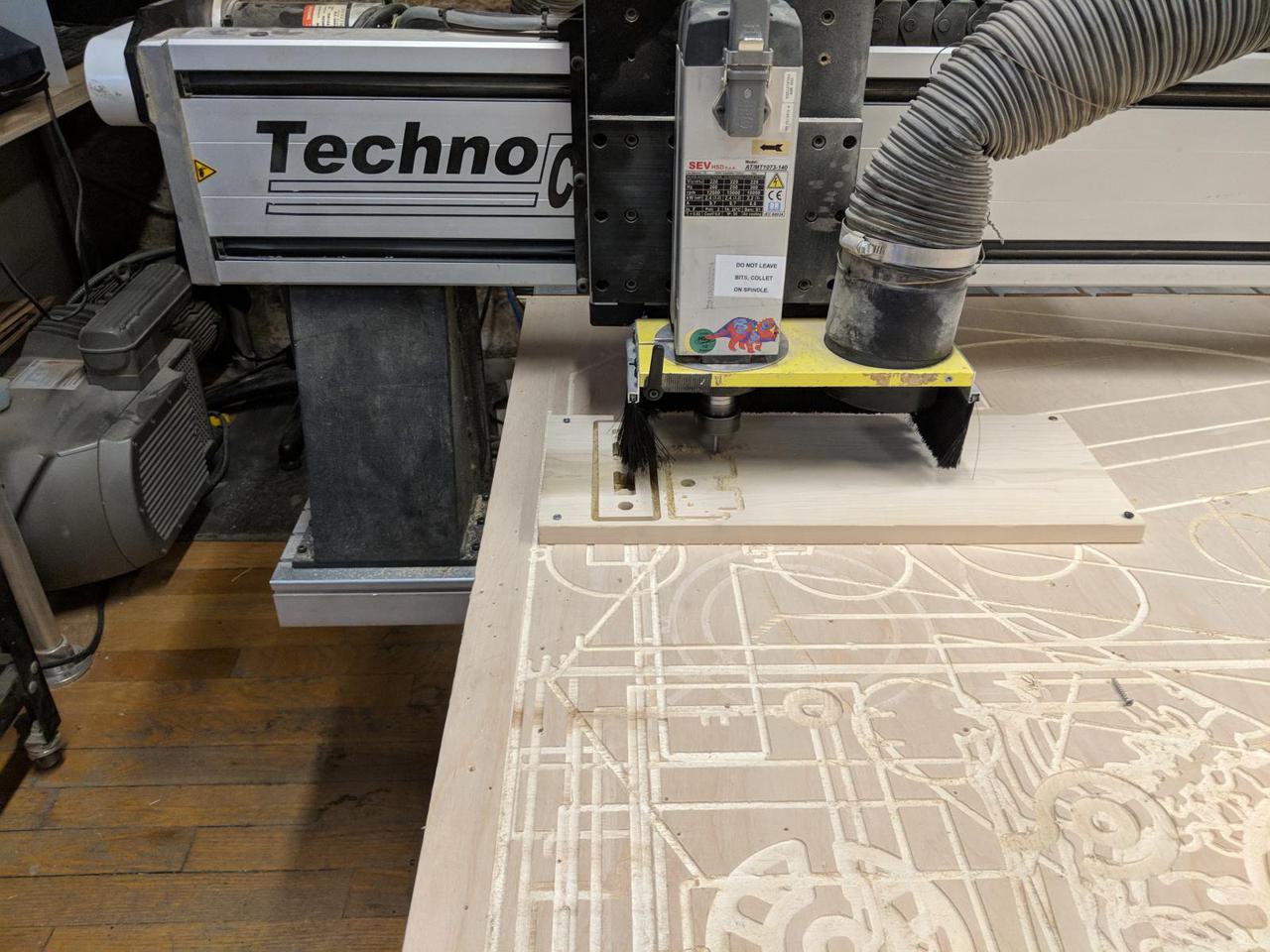
After a few minutes the contours are cut. Now, the big question: how well do the two pieces fit?

I found that the fit was pretty good. The finger tenons extended a little bit through the finger holes but not significantly so.
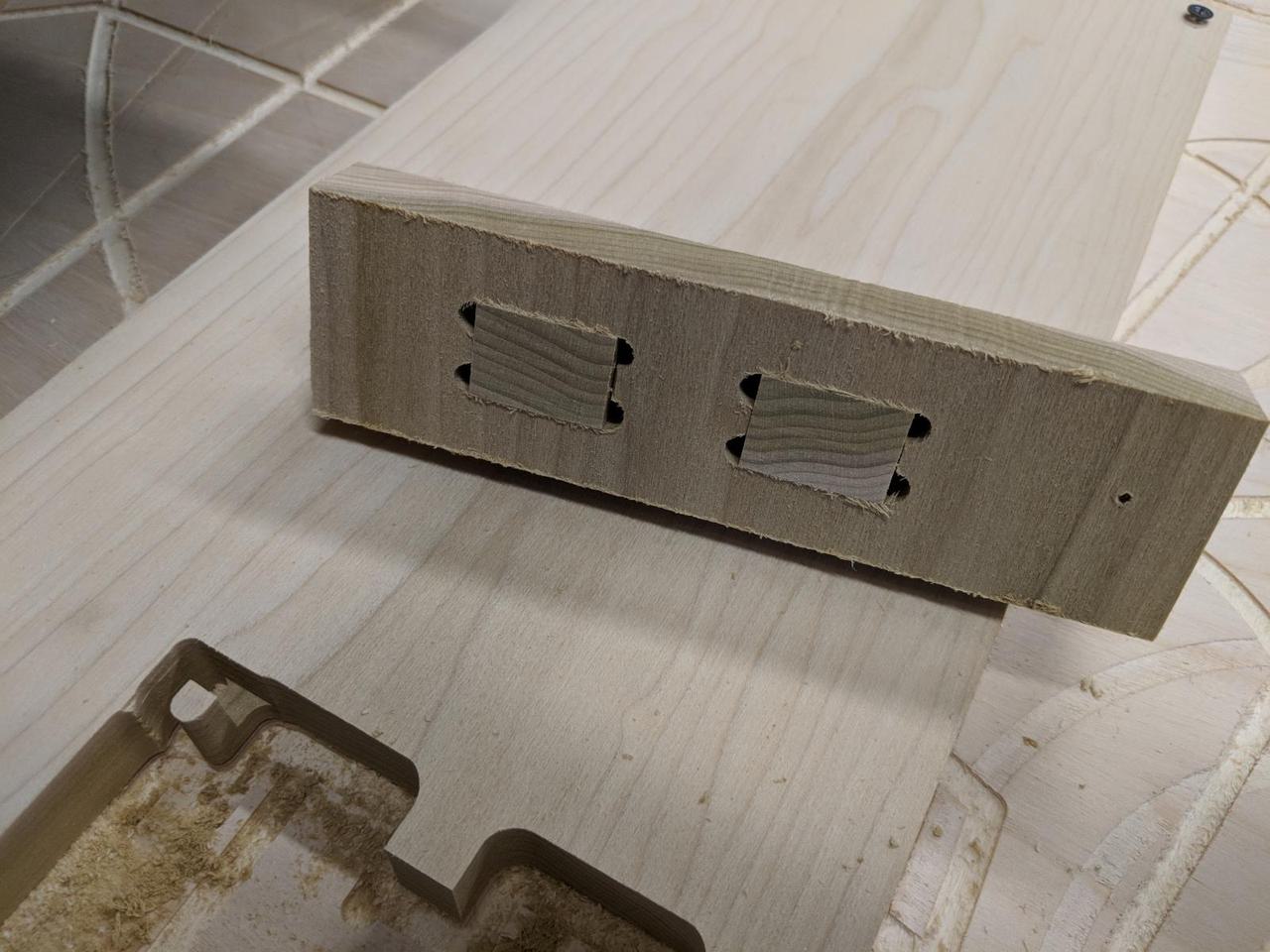
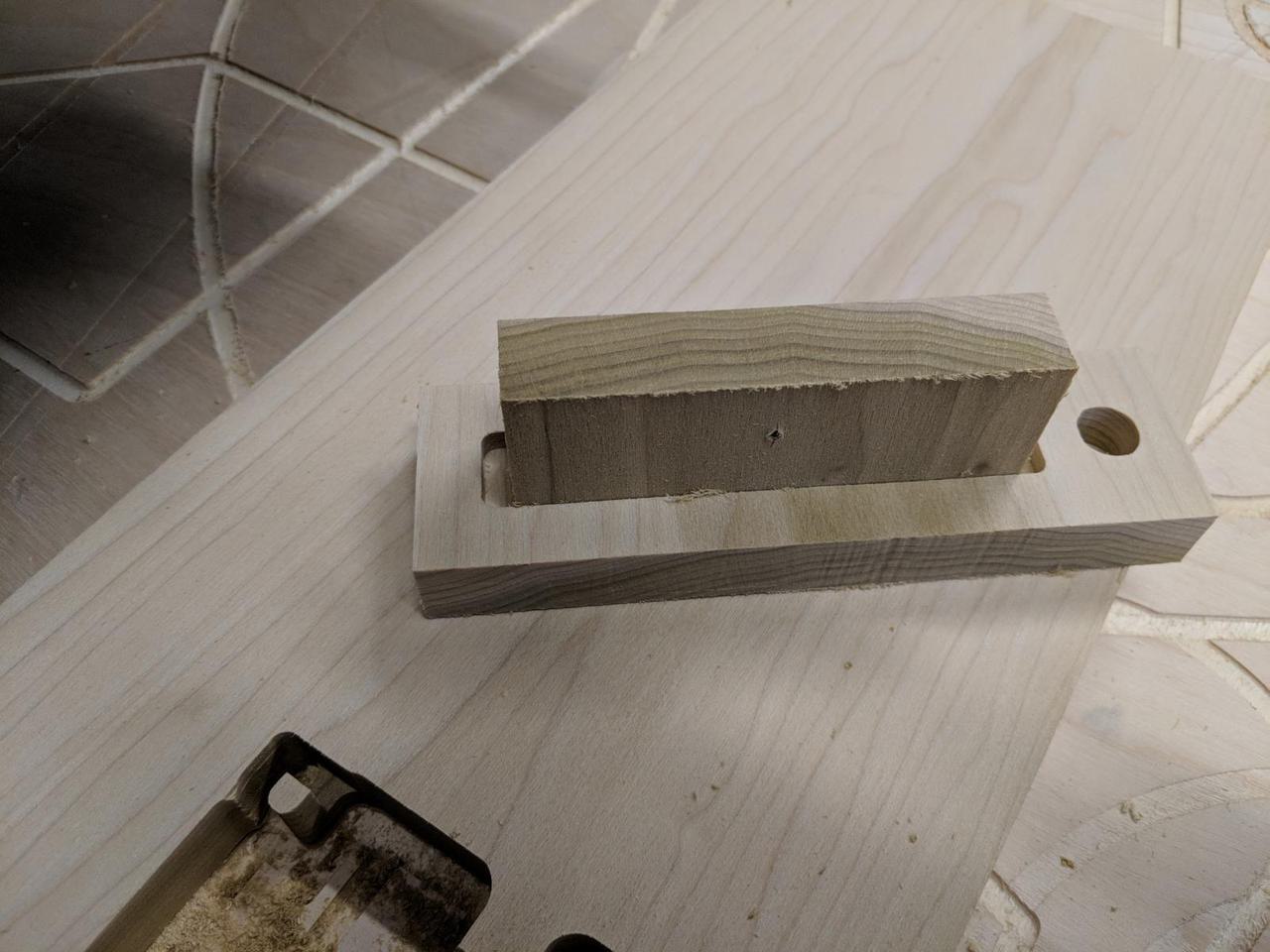
I wanted to try and see if I could get an even better fit. I went back to my laptop to model a slightly different piece in Vectorworks. Then I moved the model to the CAM station:
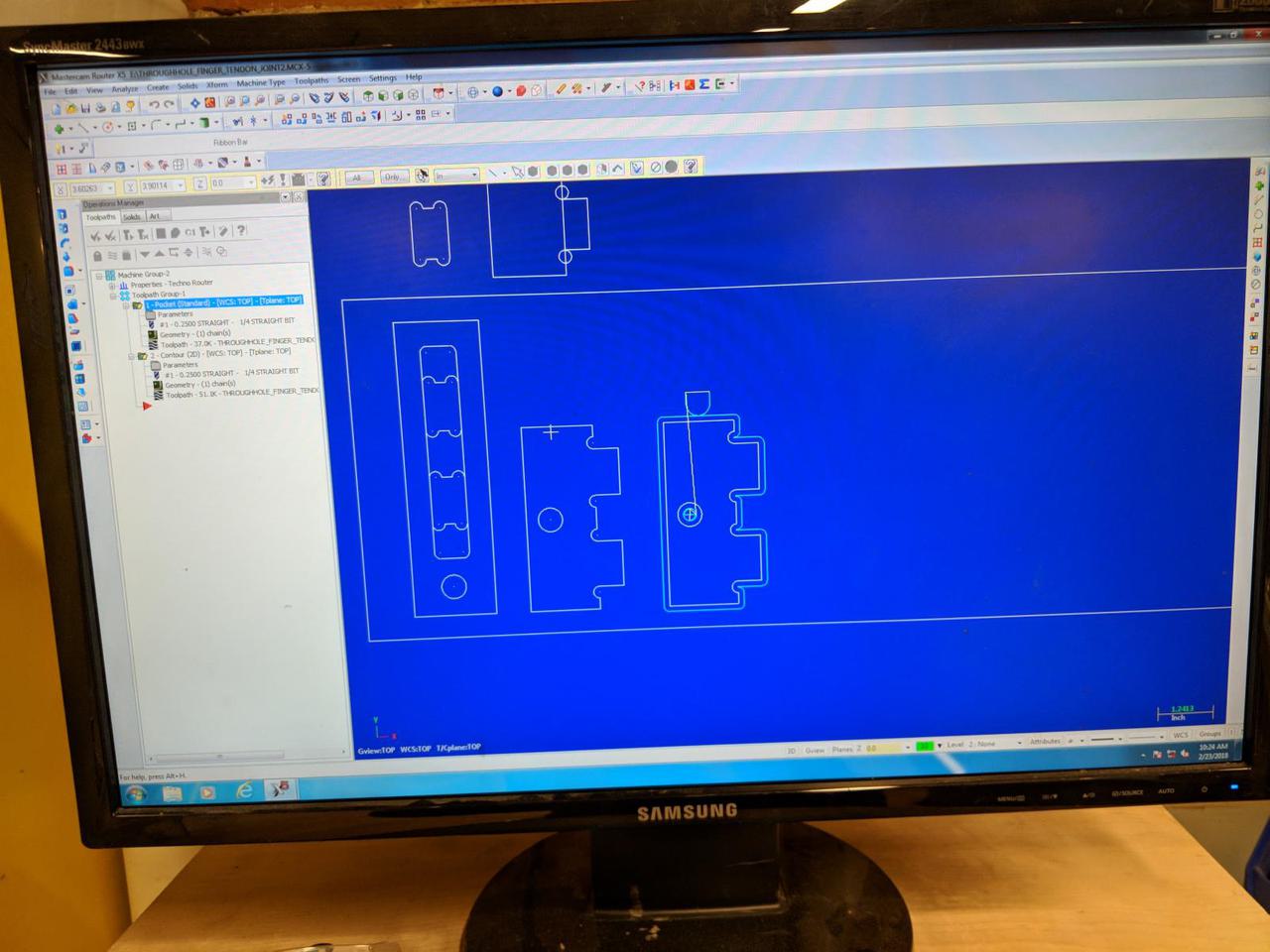
And back to the CNC computer:
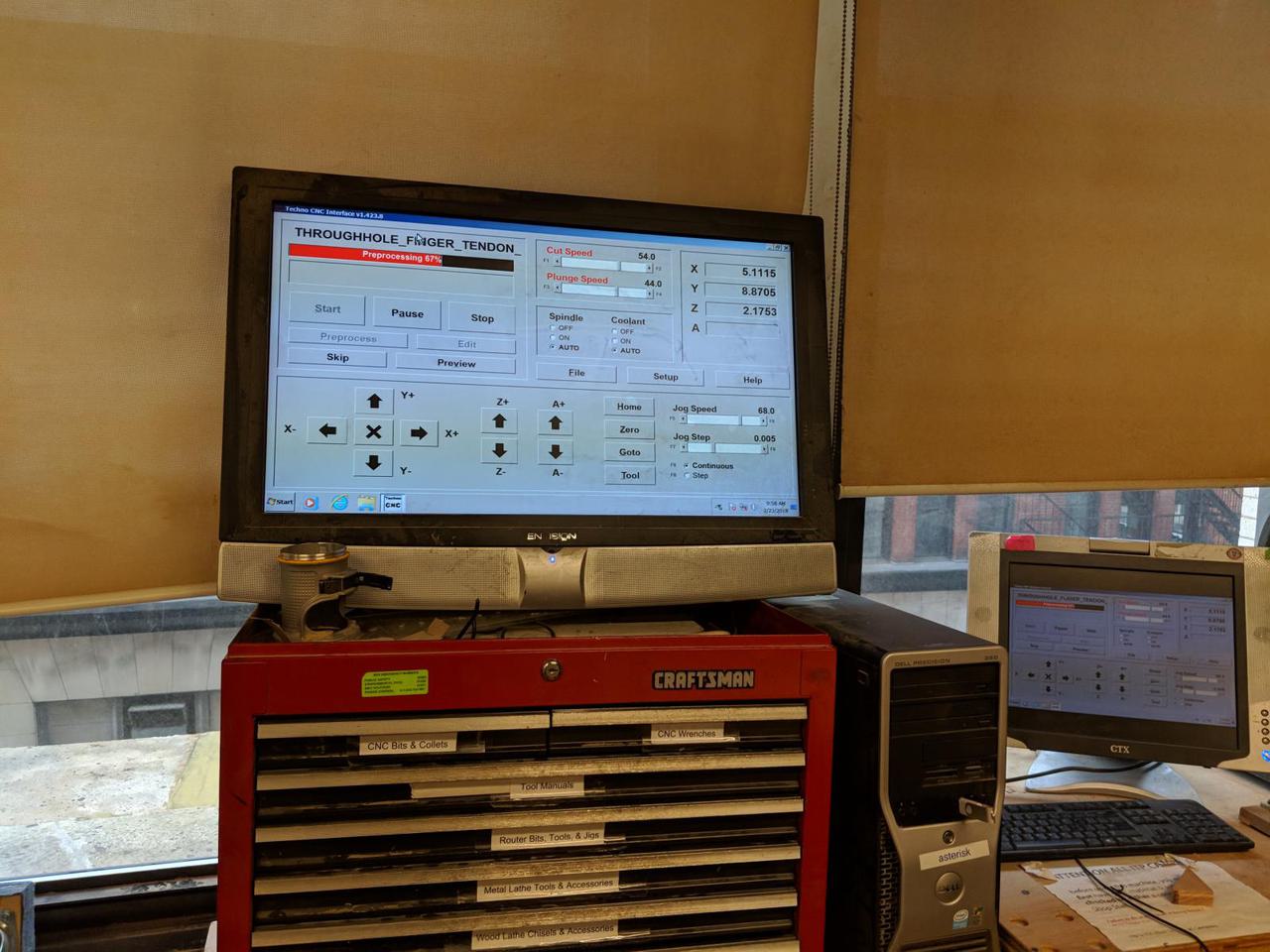
The second and last piece was quickly milled. When it finished I found it fit the perfectly.
I am going to use the results of this experiment in my midterm project for this class. My goal is to make a towel rack for my bathroom because I hate the one I have. This project sounds simple and perhaps that not exciting but there is a lot of detail to focus on and learn from. I'm interested in the project and I'm excited to work on it.
Comments